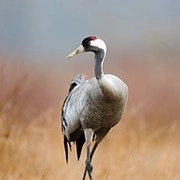Timeless Mughal Marvel

Welcome Lykkers! Fatehpur Sikri, located in Uttar Pradesh, is a UNESCO World Heritage Site that stands as a testament to the grandeur and vision of the Mughal Empire.
Built by Emperor Akbar in the late 16th century, the city is an architectural masterpiece blending Persian and Indian styles. Once a thriving Mughal capital, Fatehpur Sikri now captivates visitors with its timeless beauty and historical significance.
Fatehpur Sikri
The History of Fatehpur Sikri
Fatehpur Sikri was constructed by Emperor Akbar between 1571 and 1585. The city was designed to be a grand capital after Akbar visited the Sufi saint Sheikh Salim Chishti, who prophesied the birth of Akbar’s heir. Out of gratitude, Akbar named the city Fatehpur ("City of Victory") and built a magnificent palace complex and mosque near the saint’s abode.
Want to Escape the Hustle and Bustle? Come to Gelendzhik for a Close Encounter with the Sea Breeze and Sunshine!
Panama Sailing Travel Guide: Sailing from Panama to Colombia!
Trip To Gold Coast, Australia, Findout Most Amazing Places!
Why Lake Baikal Should Be on Every Traveler's Winter Bucket List? The Majestic Beauty of Snow and Lake!
Jet Ski at Tenerife Adventure and Fun Like Never Before!
If you don't visit these attractions when traveling to Yekaterinburg, don’t say you have been there!
However, the city faced an early decline due to water scarcity and political challenges. By 1610, it was largely abandoned, leaving behind a stunning ghost city that continues to draw admirers.
Architectural Highlights
Fatehpur Sikri is a stunning example of Mughal architecture, showcasing intricate carvings, grand structures, and innovative designs. Some of the must-visit monuments include:
1. Buland Darwaza:
The "Gate of Magnificence" is one of the largest gateways in the world, standing at 54 meters high. Built to commemorate Akbar's victory over Gujarat, the gateway is adorned with inscriptions and intricate carvings, making it an iconic symbol of Fatehpur Sikri.
2. Jama Masjid:
One of the largest mosques in India, the Jama Masjid is a serene place of worship. It reflects Persian and Mughal architectural styles, with beautiful domes and a vast courtyard.
3. Tomb of Sheikh Salim Chishti:
This marble mausoleum is a devotee site for people of all faiths. The intricate lattice screens (jalis) and serene ambiance make it a spiritual and architectural wonder.
4. Diwan-i-Aam and Diwan-i-Khas:
These were the halls for public and private audiences, respectively. The Diwan-i-Khas is especially famous for its central pillar, which supports a unique platform where Akbar held discussions with scholars of different faiths.
5. Panch Mahal:
A five-story palace that served as a leisure space for the royal family. Its open design, with diminishing floors, allowed for a cool breeze to flow through, showcasing Akbar's appreciation for comfort and aesthetics.
6. Jodha Bai’s Palace:
This large palace was the residence of Akbar’s Hindu queen, Jodha Bai. It exhibits a blend of Hindu and Mughal architectural styles, with ornate carvings and courtyards.
Cultural Significance
Fatehpur Sikri reflects Akbar’s vision of culture and harmony. The city was a melting vessel of diverse influences, as seen in its architectural and artistic designs. Akbar's policy of "Sulh-i-Kul" (universal tolerance) is symbolized by the coexistence of Muslim and Hindu elements throughout the complex.
Visiting Fatehpur Sikri
Best Time to Visit
The ideal time to explore Fatehpur Sikri is between October and March when the weather is pleasant. Summers can be scorching, making outdoor exploration challenging.
How to Reach
By Air: The nearest airport is in Agra, approximately 40 km away.
By Train: Agra is the nearest major railway station, well-connected to major cities.
By Road: Fatehpur Sikri is easily accessible by road from Agra and other nearby cities.

Timings and Entry Fee
Timings: 6:00 AM to 6:00 PM
Entry Fee: Nominal charges for Indian citizens of 50 rupees and for foreign visitors, it is 610 rupees, for children below 15 years it is free. (subject to change).
Fatehpur Sikri is more than just a historical site; it is a window into the golden era of Mughal architecture and governance. Its timeless beauty, historical importance, and spiritual significance make it a must-visit destination for history enthusiasts and travelers alike.
A visit to Fatehpur Sikri offers a journey back in time, allowing you to marvel at the ingenuity and vision of one of India’s greatest emperors. Whether it’s the imposing Buland Darwaza, the serene tomb of Sheikh Salim Chishti, or the intricate palaces, every corner of Fatehpur Sikri tells a story waiting to be discovered.
The fort of Fatehpur Sikri | Jodha Akbars Palace | Drone View
Video by BrainWing

 · Travel team
· Travel team